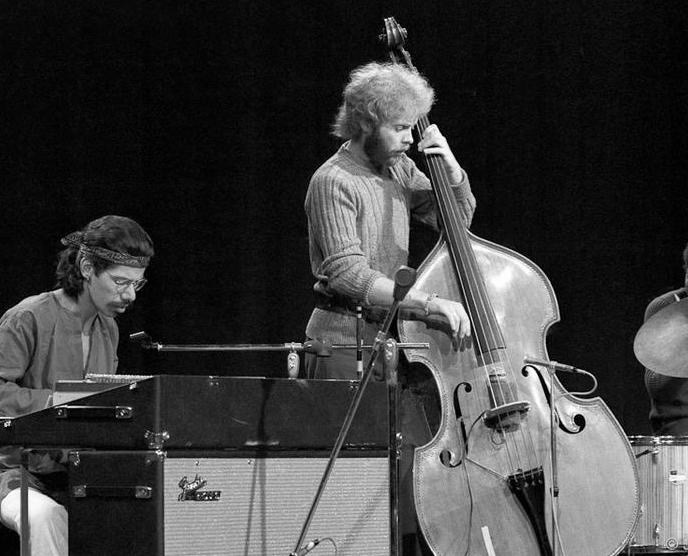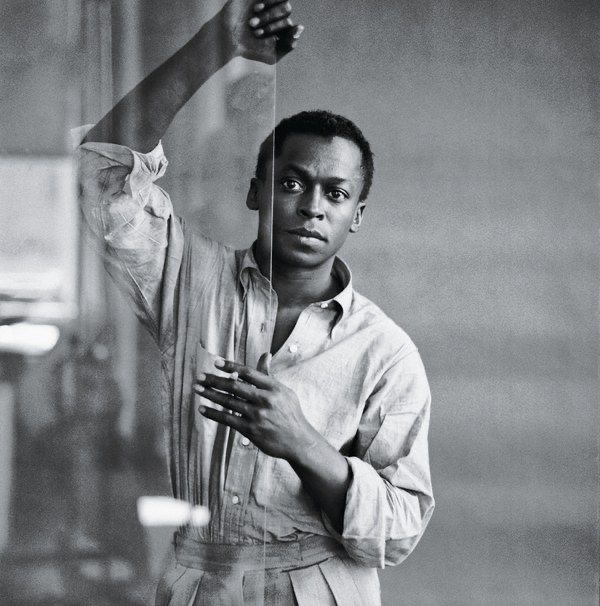Dive into the Power & Passion of ‘Tenor Madness
In the vast panorama of jazz, Sonny Rollins’ “Tenor…
I am constantly in awe of Miles Davis‘ “Filles de Kilimanjaro.” Each individual note is a journey through sound, and the entire piece is an exquisite masterpiece. Recorded at Columbia Studio B in New York City between June and September 1968, this Columbia Records release captures the continually evolving style of Davis with remarkable clarity. Listening to this album is like entering a new world, one filled with beauty and emotion. It’s no wonder why it continues to captivate audiences today.

The musicians accompanying Miles on this voyage included Wayne Shorter on tenor saxophone, Herbie Hancock on piano and electric piano, Ron Carter on bass, and Tony Williams on drums. Each of them, already at the peak of their prowess, came to the studio with a burning desire to explore new frontiers in jazz. Their collective talents and chemistry laid the foundation for an album that would push the boundaries of the genre. To replace Carter and Hancock on the tunes “Frelon Brun” and “Mademoiselle Mabry” Davis enlisted the talents of keyboardist Chick Corea and bassist Dave Holland.
“Filles de Kilimanjaro” marked a significant departure from Davis’ earlier works, embracing a more experimental approach. The album showcased a shift towards electric instruments, foreshadowing the birth of jazz fusion. The music was a harmonious marriage of melody and rhythm, a stunning display of the musicians’ individual virtuosity, and a testament to their collective genius.
The album cover, a mesmerizing photograph of Davis’ then-wife, Betty Mabry, reflects the enigmatic nature of the music contained within. Her gaze, a captivating blend of intrigue and intensity, serves as a visual representation of the album’s sonic explorations. The image is an invitation to delve deeper into the music and uncover the layers of meaning behind each track.

As the album unfolds, each track unravels a new story. The opener, “Frelon Brun,” sets the stage with its hypnotic rhythm and electrifying interplay between the musicians. It’s a song that showcases the brilliance of Miles’ muted trumpet, weaving through the fabric of the music with a haunting elegance. Wayne Shorter’s tenor saxophone dances alongside, adding depth and texture to the composition.
“Petits Machins,” which translates to “Little Things,” is a deceptively complex piece that features an intricate tapestry of rhythm and melody. Herbie Hancock’s piano takes center stage, his fingers painting a sonic landscape that is both delicate and daring. Meanwhile, Ron Carter’s bass serves as the anchor, providing a solid foundation for the other musicians to build upon.

But it is “Tout de Suite” that stands out as my favorite song on the album. This track is a true testament to the power of collaboration, as each musician contributes their unique voice to create a captivating soundscape. Tony Williams’ drumming is nothing short of extraordinary, as he gracefully navigates the intricate rhythms with an intuitive sense of timing. The song is a symphony of sound, a dazzling display of the collective power of these legendary musicians.
Upon its release, “Filles de Kilimanjaro” garnered mixed reactions. Some critics struggled to comprehend the album’s bold, unorthodox approach to jazz, while others applauded its innovative spirit. However, over time, the album’s importance became apparent, and it garnered the recognition it deserved.
“Filles de Kilimanjaro” played an instrumental role in ushering in a new era of jazz, one characterized by a fearless embrace of the unknown. The album’s groundbreaking fusion of jazz, rock, and funk elements inspired countless musicians to follow in its footsteps, ultimately giving birth to an entirely new genre: jazz fusion.
Today, the album is hailed as a seminal work in the annals of jazz history, a testament to the timeless genius of Miles Davis and his remarkable ensemble. It serves as a reminder that true art knows no boundaries and that the spirit of exploration and innovation is what drives music forward.
In conclusion, “Filles de Kilimanjaro” is a shining example of the transformative power of music. It is an album that transcends time and genre, pushing the limits of jazz and opening the door to a world of uncharted sonic possibilities. The fearless creativity displayed by Miles Davis and his fellow musicians laid the groundwork for a new generation of artists, forever changing the landscape of jazz. As we listen to “Filles de Kilimanjaro” today, we are reminded of the boundless potential of artistic expression and the enduring impact of truly groundbreaking music.